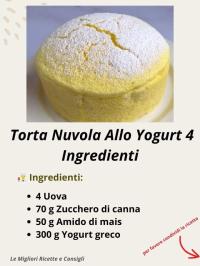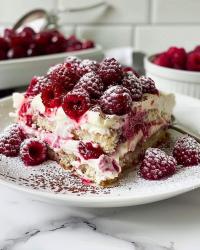Copy Link
Add to Bookmark
Report
HOMEBREW Digest #2228

This file received at Hops.Stanford.EDU 1996/10/12 PDT
Homebrew Digest Saturday, 12 October 1996 Number 2228
FORUM ON BEER, HOMEBREWING, AND RELATED ISSUES
Mike Donald, Digest Janitor-in-training
Thanks to Rob Gardner for making the digest happen!
Contents:
Commercial Copies ((MR STEPHEN D GARRETT))
Mocha Java? (Dale Smith)
Home Grown Hops... ((Aesoph, Michael))
re: red wolf (Rscholz@aol.com)
Wit recipe (Kit Anderson)
1996 Capitol District Open (Fred Hardy)
extreme beers (Eugene Sonn)
malt revisited ("Ray Robert")
Hugh Baird Grains: Experiences? (Mark Thompson)
Beans and beer? (Paul Sovcik)
AHA Styles (TheTHP@aol.com)
Pilsner Urquell ("Brian Thompson")
history of american beers- (PGILLMAN@POMONA.EDU)
Water question ("Scott Rogerson")
Alt in the USA ((Jim Layton 952-3733))
HopDevil, cont. (Jim Busch)
Commercial copies ("Scott Rogerson")
IPA ((James and Tamara Williams))
Re: Copper kettles, cous cous beer, acidifying sparge, completely cool idea ("David R. Burley")
Rheinheitsgebot & H2O adjmts ("William D. Knudson")
RE: Corn/Chica (Richard Gardner)
New Zealand Super Alpha hops (Charles Capwell)
Re: Alt Beer (Rich and Lori Cox)
The IPA Thread ! ("Mark Bridges")
1056 and culturing (Clint Weathers)
For SUBMISSIONS to be published, send mail to:
homebrew@aob.org
For (UN)SUBSCRIBE requests, send mail to:
homebrew-digest-request@aob.org
and include ONLY subscribe or unsubscribe in the BODY of the message.
Please note that if subscribed via BEER-L, you must unsubscribe by sending
a one line e-mail to listserv@ua1vm.ua.edu that says: UNSUB BEER-L
If your address is changing, please unsubscribe from the old address and
then subscribe from the new address.
If your account is being deleted, please be courteous and unsubscribe first.
For technical problems send e-mail to the Digest Janitor,
homebrew-digest-owner@aob.org.
OTHER HOMEBREW INFORMATION
http://www.aob.org/aob - The AHA's web site.
http://alpha.rollanet.org - "The Brewery" and the Cat's Meow Archives.
info@aob.org - automated e-mail homebrewing information.
ARCHIVES:
At ftp.stanford.edu in /pub/clubs/homebrew/beer via anonymous ftp. Also
http://alpha.rollanet.org on the web and at majordomo@aob.org by e-mail.
COPYRIGHT:
As with all forums such as this one, copyrights are retained by the
original authors. In accordance with the wishes of the members of the
Homebrew Digest, posts to the HBD may NOT be sold or used as part of a
collection that is sold without the original authors' consent. Copies
may ONLY be made available at no charge and should include the current
posting and subscription addresses for the HBD.
----------------------------------------------------------------------
From: sdginc@prodigy.com (MR STEPHEN D GARRETT)
Date: Fri, 11 Oct 1996 14:35:48, -0500
Subject: Commercial Copies
Ed comments:
>Periodically people request recipes for a clone of this beer or a
>copy of that beer, and I always wonder why would you aspire to
>make a copy of a great beer, when you could make a great beer of
>your own. Isn't making your own great beer what homebrewing is
>all about?
For developing ones brewing skills, I think a stronger argument can
be made that cloning is far more effective than brewing to style
guidelines. Find a beer with qualities that you really want in your
own beers. Get all the information you can about how this beer is
brewed, including other brewers recipes. When youve brewed your
clone, you get to do a direct taste test comparison with a bottle of
the goal beer.
Isnt learning to make great beer what homebrewing is all about?
Ed goes on:
>for those of you out there that want to clone
>Sierra Nevada Pale ale for instance, why don't you try to figure
>out what it is that makes you like SNPA more than other pale
>ales?
By golly, bet thats exactly what those low-life cloners thought they
were doing.
Cheers!
Steve
sdginc@prodigy.com
------------------------------
From: Dale Smith <des@io.com>
Date: Fri, 11 Oct 1996 13:31:11 -0500
Subject: Mocha Java?
I recently had a Red Hook Double Black Stout made with Starbuck's (TM)
coffee. I really enjoyed it. I have been toying with the idea of brewing
a Mocha Java Porter or Stout which would be bittered with unsweetened
chocolate and "dry hopped" with black coffee. Any idea about this?
Anybody got an all grain recipe that they've actually brewed and like?
I'd prefer something that could be ready by Christmas and wouldn't need
to age for months.
Thanks,
Dale
------------------------------
From: aesoph@ncemt1.ctc.com (Aesoph, Michael)
Date: 11 Oct 96 15:37:03 EDT
Subject: Home Grown Hops...
Dear Collective:
I have to bother everyone again with this question, but I lost the
previous replies due to a network crash wiping out my mailbox. Some
company out there sells the rhizomes for home grown hops, could I get a
phone number or EMail address? TIA!!!!!!!!
==================================================
Michael D. Aesoph Associate Engineer
==================================================
------------------------------
From: Rscholz@aol.com
Date: Fri, 11 Oct 1996 15:32:13 -0400
Subject: re: red wolf
Gregory King writes:
>I stumbled across an article....that describes the development of
Anheuser-Busch's
>Red Wolf beer. .....The bulk of the article (maybe 85% of it) describes the
efforts of >the A-B team to come up with the packaging (i.e. what do the
labels look like) and >a marketing strategy for the product. In the small
section of the article that
>describes the actual product development, the main point is that the barley
>needs to be roasted in just the right way to get that red color.
That's 15% on the product and 85% on the marketing , if I figured it right.
Just maybe that's why A-B sells more swill worldwide than anybody else?
richard scholz
bklyn ny
------------------------------
From: Kit Anderson <kit@maine.com>
Date: Fri, 11 Oct 1996 15:41:50 -0500
Subject: Wit recipe
>From: RUSt1d? <rust1d@li.com>
>Date: Wed, 09 Oct 96 11:19:47 -0700
>Subject: (no subject)
>
>Following is the wit recipe I built and why. Any comments would be
>appreciated.
>
>Name: Wit Christmas O.G.: 1.049
Hi, John.
Your wit recipe is going to have the wrong hops for bitter and flavor. Use a
low alpha noble hop like Tetnang. High alpha hops are OK in high gravity
beers but will be way out of place in a delicate wit. Cascade is OK if used
for bittering, but not for flavor. As you said, there should be a noble
flavor, not American. So cut out the Cascade. There should be little to no
hop aroma in a wit so cut out the 15 min and 0 min addition of Szaaz. I use
Szaaz flowers at 60 min and 20 min.
Hoegaarden is better yeast than Wyeast. BrewTek's is the best. It tastes
like Celis and you can bottle a week after pitching. Yeast Lab has a good
culture as well.
The coriander in secondary is very important. I'm glad you have it there.
You mentioned that curacao adds citrus notes. I assume you are referring to
the dried peel and not the liquor. It actually adds bitternes and not
citrus. The citrus comes from the yeast.
You are going to need 88% lactic acid when you bottle to adjust down the pH.
Do it by taste instead of a meter or paper. I think Celis is 4.3 but when I
went by that, it was too acidic.
In any event, you will have a beer much better than the insipid Blue Moon or
Wit!
- ---
Kit Anderson
Bath, Maine
<kit@maine.com>
The Maine Beer Page http://www.maine.com/brew
------------------------------
From: Fred Hardy <fcmbh@access.digex.net>
Date: Fri, 11 Oct 1996 15:36:25 -0400 (EDT)
Subject: 1996 Capitol District Open
Just a reminder that the deadline to enter the 4th annual Capitol District
Open is right around the corner.
Entry open window for this year's competition is October 14 through
October 29. Enter early and often. Mailed entries should be sent to:
1996 CDO
c/o Fred Hardy
13215 Poplar Tree Road
Fairfax VA 22033
Entry packets should be available at DC area drop off points: Brew America
(Merrifield/Vienna), Hero's (Manassas), Brew Masters (Rockville), The Wine
Seller (Herndon) and Barley House (Woodbridge).
Two bottles per entry. Entry forms required, but no recipes. All AHA 1996
NHC beer categories/subcategories accepted. Beer only - no meads, ciders
or sake. AHA sanctioned, BJCP recognized. AHA bottle ID and entry forms
are acceptable (IMO, ours are neater).
Entry fees are $6.00 for 1st entry, $5.00 for the 2nd, $4.00 for the 3rd
and $2.00 for each entry over 3. Checks should be made out to DReBS.
The competition will be on Saturday, November 2, at the Hyatt Regency
Washington hotel on Capitol Hill (400 New Jersey Ave, N.W.) in DC.
Interested judges/stewards should contact Wayne Gisiger (202) 927-4234
[week days], or (703) 256-8838 [evenings, etc.].
For official entry packets for non-DC area brewers, email your snail mail
address to me, and your packet will go in the mail the same day. A
self-extracting, zipped version (WP 6.1 format) is available if you want
it emailed to you. Just let me know.
Cheers, Fred
===========================================================================
We must invent the future, else it will | Fred Hardy
happen to us and we will not like it. | Fairfax, Virginia
[Stafford Beer, "Platform for Change"] | email: fcmbh@access.digex.net
------------------------------
From: Eugene Sonn <eugene@dreamscape.com>
Date: Fri, 11 Oct 1996 16:15:55 -0400 (EDT)
Subject: extreme beers
Hello HBD,
George Piro mentions that he doesn't think there are good USA
examples of Alt Bier because the true style is "extreme" and not very
marketable. I would agree, but think it's a more general phenomena.
Remember the thread about Marzen/Octoberfest? Most of the
commercially available ones are not textbook examples of that style. Most
commercial brews (except for limited-run beers) are meant to appeal to the
general consumer. That's ok because if you like the "watered-down"
version. You may look for a more true-to-style version of the beer.
For me, homebrewing has it's major appeal because I can tinker
with my beers until I have them exactly how I like them. Yes there are
pockets of the country where super-hopped beers are the norm and yes there
are places where you can get good true-to-style beers, but when was the
last time you had an Eisbock at a bar in the U.S.?
This whole post may be a showcase of stating the obvious, but I
would appreciate if the postings on the HBD would just accept these beers
for what they are......a way for people to ease into a new beer style.
Maybe when we have as many breweries as there were before prohibition
there could be a real market for these true-to-style beers.
Flame away,
Eugene
eugene@nova.dreamscape.com
------------------------------
From: "Ray Robert" <Ray_Robert@bah.com>
Date: 11 Oct 1996 16:15:35 U
Subject: malt revisited
A follow on to an earlier question re: the best malt to buy.
Went to my local hb store and talked to one of the employees there re: the
types of malts they carried in bulk. I was interested in Hugh Baird in
particular (2 row). He said he carried it, but also carried a UK brand called
"crisp" . He felt it had a little more character than HB malt. I have never
seen it discussed on the digest. Anyone know about this stuff?
Robert
ray_robert@bah.com
------------------------------
From: Mark Thompson <markt@hpdocp3.cup.hp.com>
Date: Fri, 11 Oct 1996 13:20:28 -0700
Subject: Hugh Baird Grains: Experiences?
I have been lucky enough to find a source for the whole Hugh Baird
product line imported by Great Western Malting Co. I only have
experience using the wonderful British Pale Ale malt and crystal (70,
135). I'm wondering if anyone has experience with any of the other
varities that i see on their list. Some of these that i am interested in
are:
HB Pilsen
HB Munich (I went a head and got a bag of this cause i
have already heard good reports on it)
HB Carastan
HB Brown (i made a porter with this but it's not ready)
HB Scottish
HB Organic (i'm realy curious about this)
HB Stout (not black or roasted barley)
HB Vienna
They also have the Great Western domestic varities:
GW Pale Ale (High Color) (This is listed in addition to
the Primium 2 row which i use all the
time)
GW Munich and Vienna
Any information would be appreciated. I'll take private E-Mail
and report.
- --
*^*^*^*^*^*^*^*^*^*^*^*^*^*^*^*^*^*^*^*^*^*^*^*^*^*^*^*^*
Mark E. Thompson mailto:mark_thompson@hp.com
Enterprise Objects Program Networked Computing Division
Hewlett-Packard Co. Cupertino CA
*^*^*^*^*^*^*^*^*^*^*^*^*^*^*^*^*^*^*^*^*^*^*^*^*^*^*^*^*
------------------------------
From: Paul Sovcik <U18183@UICVM.UIC.EDU>
Date: Fri, 11 Oct 96 15:27:11 CDT
Subject: Beans and beer?
The other night, after making a huge crockpot full of pinto beans and
realizing that there was no way on Gods green earth I and my family could
eat all these things before they spoil, and the last thing I'd ever do would
be to give them to the dog, and just how DO six cups of dry beans turn into
a full week of meals....
That I wondered about the potential for using beans as an adjunct in beer.
I know dry beans tend to be very high in protein, and they are low in fat.
I'm not sure about carbohydrate content though.
Are these things pure protein? Has anyone ever investigated the potential
for using pinto or navy or kidney or garbanzo beans as an adjunct? Delano?
How would you mash them?
- -Paul
Paul Sovcik, Western Springs, IL
------------------------------
From: TheTHP@aol.com
Date: Fri, 11 Oct 1996 16:31:58 -0400
Subject: AHA Styles
Hello all ye experienced netsurfers and brewers,
Ed Steinkamp makes a good point about making your own beer and your own
reciepe's. I for one, though being new to the
"addiction" (hobby just does't do justice), have never used a recipe I didn't
adjust, mess in, or create on my own. Several people in many diffent threads
have discussed AHA Style guidelines. WHere can I find these. Are they on-line
buried somewhere in the massive depths of "The Brewery" web site? If they are
available would someone be so kind as to tell me where?
Thanks, Sincerely, Phil Wilcox
ps. Im currently concocting a pumpkin ale, all advice welcome.
******KneeDeep in Ale******
******Poison Frog Brewery******
------------------------------
From: "Brian Thompson" <bthompson@mfi.com>
Date: Fri, 11 Oct 96 10:00:54 PST
Subject: Pilsner Urquell
Sorry this is so late on the thread (it takes a long time to catch up
on HBD reading once you get behind), but I thought I'd toss my two
cents in.
Back in the summer of '91, I happened to be traveling in Europe and
spent a few days in Czechoslovakia. The country at that time was still
very much recovering from communism and prices reflected that. My
friend and I managed to pick up a case of Prazdroj (as PU is known in
CZ) for the paltry sum of $3.50. We're talking 12 half liter bottles
for what we pay for a pint here. I thought I was in heaven. I'd never
tasted PU before that day and I swore if I had my way I'd never drink
another Budmilloors again. Well, I got back to America and found a few
places that imported PU (it's much more available today) but was shocked
at the poor quality of every single bottle I tried. The moral of the
story? I don't drink PU in America, to this day I haven't had an un-skunked
bottle. But by God, if you get the chance to try it fresh, you will know
the meaning of religious experience.
I was again in Prague about two years ago and made an effort to try other
Czech beers: Staropramen and Budvar are as good, if not better, than PU.
For those of you living in the Bay Area, Toronado in SF has Staropramen on
tap, haven't been to try it yet, but if it's half as good as it can be, it's
worth checking out.
Brian Thompson
SF, CA
------------------------------
From: PGILLMAN@POMONA.EDU
Date: Fri, 11 Oct 1996 14:18:22 -0700 (PDT)
Subject: history of american beers-
if anyone has, or knows the location of a collection of old recipies or
manuals upon brewing, malting and/or distilling, i would appreciate help
with a project in which i am attempting to establish guidelines for,
and create modern measurements for old american styles (colonial through
the 1880's) thanks alot
phil gillman
Pgillman@pomona.edu
p.s. i will publish my major styles and recipies later in the year, both
electronically and physically-
happy brewing.
------------------------------
From: "Scott Rogerson" <rogerson@hom.net>
Date: Fri, 11 Oct 1996 18:23:51 -0500
Subject: Water question
I just got this information from my water company. Can anyone give me some
advice on where to go from here? Anything here look real bad? (or good?)
Alkalinity 25-30 mg/l
pH 7.0 - 7.5 mg/l
Residual C12 1.3 - 1.7 mg/l
Fluoride .9 - 1.2 mg/l
Hardness 30 - 35 mg/l
Iron .000 - .015 mg/l
Manganese .000 - .010 mg/l
Phosphate .9 - 1.2 mg/l
Turbidity .01 - .10 NTU
Email, or HBD is fine.
Thanks.
Scott
================================
Scott Rogerson rogerson@hom.net
http://www.hom.net/~rogerson
================================
------------------------------
From: layton@sh28.dseg.ti.com (Jim Layton 952-3733)
Date: Fri, 11 Oct 1996 17:51:28 -0500
Subject: Alt in the USA
OK, I'll chime in. Hannen Alt is available in the Dallas, Texas area. It
is the only alt imported from Germany that I have seen in this area. I bought
a bottle two weeks ago to use as a standard in evaluating an alt which I
recently brewed. The label indicated the location of the brewery, but it
wasn't Dusseldorf. I won't bore you with the several ways in which my homebrew
missed the mark, but I will use these observations in adjusting my next
attempt at an altbier:
Color - Pretty dark but quite clear. Like a dark Oktoberfest.
Malt - Toasted malt flavor, more intensely toasty than Spaten or Paulaner
Oktoberfest. Might have used a darker grade of munich malt than I
can get around here. The finish was dry.
Hops - Fairly bitter, very little hop flavor. More balanced in bitter/
sweet than I had expected from some descriptions of the style
(The AHA guidelines show a pretty wide range for IBUs). No hop
aroma to my nose.
Esters - Won't mistake this for a lager, but it was a pretty clean brew.
A clean ale flavor.
Overall - Like a dark Oktoberfest brewed with an ale yeast and a bit more
hops. Very tasty, but I think the specimen I had may have lost
something due to age or pasteurization. The malt flavor was just
a little less fresh than it might have been.
I won't claim that Hannen makes the definitive altbier, but this was good.
A homebrewed version could be better!
Jim Layton
layton@sh28.dseg.ti.com
------------------------------
From: Jim Busch <busch@eosdev2.gsfc.nasa.gov>
Date: Fri, 11 Oct 1996 18:30:17 -0400 (EDT)
Subject: HopDevil, cont.
Tom inquires:
<The recent thread on the IPA style and the high praise for HopDevil from
<Victory Brewing, has prompted me to try my hand at a "Classic IPA,"
I would first refer all interested parties to the excellent piece
written by David Brockington on American IPAs in the current issue
of Brewing Techniques (where you can also read some of my drivel, ;-)
Note we are talking about American IPAs now. British IPAs no longer
exist, by and large. They are merely versions of Bitter. The debate
rages, tradition, history, color, hop types, etc. I say tradition is
great and very important but we in the US craft brewing industry are
expanding and redefining styles all of the time. I didnt go about
brewing HopDevil's precursors with the idea that I had to mimic some
historical IPA recipe. I made what I liked, using hops that I find
pleasing and yes, even using that horrific bland American Ale yeast!
I was inspired by Celebration Ale, a beer Ive always had a love for,
but I never tried nor accomplished imitating SNCA. While HopDevil
is darker than most IPAs it is in range with many hoppy American ales
being brewed today. I dont find color or malt foundation to be a
defect with American IPAs but I think they bring complexity to the
brew that would not exist with a grist predominantly based on pale
and Munich malts. The one aspect we all agree on is a heavy obvious
hop bittering foundation.
<My request is for hopping info for a classic IPA.
Classic, historical IPAs should be crafted in the veins of Brooklyns
IPA. Light in color and based on UK hops. OG 16P, FG 3P or less,
IBUs 55-70, good aroma presence.
<It sounds as if HopDevil is being nominated for the definitive IPA (I can
<forgive you for using cascades). Can you provide me with insight, Jim?
<Any trade secrets that Victory is willing to part with? ;^)
The general overview of the beer can be found in Daves article. Cascades
provide the late aroma additions while Centennials and some domestic
Tettnang are used in the kettle. Aim for about 50 IBUs from the first
Centennial addition to provide the hop foundation and use additional
hops to taste for mid and late additions. Our grist is based on German
malts, imported pale malt, Vienna malt, Munich malt and caramel malts.
Brewing Techniques is a great magazine and I encourage all interested
readers to go get it and see what Dave has to say. We dont agree on
all things stylistically but I think I agree more with what Dave has
to say on styles than on any other widely published source.
Prost!
Jim Busch
See Victory Brewing at:
http://www.victorybeer.com/
------------------------------
From: "Scott Rogerson" <rogerson@hom.net>
Date: Fri, 11 Oct 1996 19:48:25 -0500
Subject: Commercial copies
> From: Edward J. Steinkamp <ejs0742@dop.fse.ca.boeing.com>
> Periodically people request recipes for a clone of this beer or a
> copy of that beer, and I always wonder why would you aspire to
> make a copy of a great beer, when you could make a great beer of
> your own. Isn't making your own great beer what homebrewing is
> all about?
From my perspective, trying to emulate beers that you like is a way of
learning. I know (for instance) that Liberty Ale is one of my favorite
beers. I'm smart enough to know that it's got plenty of bitter/aroma hops.
I know that it's dry hopped with cascades (I can read the label). But I
don't know nearly enough about beer or homebrewing to be able to discern
exactly what other ingredients are used or the methods Anchor uses to make
such a great beer. I'm sure this will come with more experience, (I've
only brewed 8 batches so far) but until then this is a way that I can start
with a recipe that is _SUPPOSE_ to taste like a target commercial beer, and
then compare it with what I get myself.
> For me, the style is the key. I may look for a great Belgium Wit
> recipe, or an extra hoppy IPA recipe, or use the information in
> the style gudelines and some example recipes to make my own
> recipe, but ultimately it is my own beer, and not some clone. For
I must admit that I almost never follow a given recipe to the letter.
Maybe this is something we all do. (?) I think a little more of ingredient
'x' should be added... or whatever. Maybe our methods aren't that far
apart.
> and I created a recipe to suite my own needs. I like Red Hook
> ESB, but I don't want to clone it, how boring. So, as I continue
Perhaps when I get as experienced as you, I won't need to ask for other
people's recipes. Until then... Why not cut a new guy a break?
Scott Rogerson
rogerson@hom.net
http://www.hom.net/~rogerson/
------------------------------
From: texan@mindspring.com (James and Tamara Williams)
Date: Fri, 11 Oct 1996 20:39:09 -0400
Subject: IPA
It's ironic that the subject of whether Bass is an IPA came up just now
since a friend and I were discussing that very topic last weekend.
I said I don't think it tastes like an IPA, but then he raised an
interesting point.
The original reason an IPA was brewed to such a high gravity and hopped so
aggressively was to survive the long boat trip to India from England.
he said: During the long trip (several months) and as the beer matured the
perceived hop level and body would continue to decrease until it arrived
in India will a more traditional hop flavor and mouth feel. So is the
definative flavor of an IPA deteremined when it was first put in the cask
or after it arrived and tapped?
Comments?
Brew on,
James
------------------------------
From: "David R. Burley" <103164.3202@CompuServe.COM>
Date: 11 Oct 96 21:10:27 EDT
Subject: Re: Copper kettles, cous cous beer, acidifying sparge, completely cool idea
>
> From: "Christopher D. King" <king1679@mars.superlink.net>
> Date: Thu, 10 Oct 1996 08:06:15 -0400
> Subject: Re: Why are copper kettles used?
>
> Copper is a micro nutrient for yeast (not sure off hand what it does but
> can look it up if anyone is interested. If a brewery is not using copper
> (ie. those w/ steel kettles but copper clad for looks) They either have
> a piece of copper at the bottom or along the way before the wort cools.
>
Sorry, but I doubt very sincerely if the Sumerians or whoever first used copper
kettles knew very much aout micronutrients. Copper is an excellent conductor of
heat ( a must for direct firing), malleable and available. Tradition is strong
in the artsy trades like wine and beer because small things like copper in
beer,
oak tannins and slow oxidation of wine, etc.,(just like your mother's cooking
is
the best in the world) are very important if not completely understood. I have
looked into some of these modern brew kettles and never seen a piece of copper.
Where is it? I don't doubt you, just would like to know more about it.
- ---------------------------------------------------------------------
From: Ken Sullivan <kj@nts.gssc.com>
And... what is couscous anyway?
I asked around the office and got answers from 'pasta' to
Morroccan Wheat. Can it be mashed?
You can mash anything, it just depends on the size of your hammer.
Cous Cous is the name of the dish which can be a very spicy. In North Africa it
is generally a thin tomato or
( mutton or goat) meat gravy over a starchy preparation which is made is made
from Bulghur ( or Bulgur) Wheat . The wheat is cracked. steamed, dried,
packaged and sold. Bulgur is essentially instant wheat granules ( about the
size
of the little seed shaped pasta - Semillas ), Just add boiling water and wait a
few minutes.
I know the box which contains the wheat grains says "Cous Cous" and sometimes
"Pasta" to describe the contents., but this is a marketing gimmick. If it said
Bulghur Wheat would you know what to do with it and buy it? I believe the
grains are called Bulgur. Bulgur is Turkish and makes me guess this preparation
is left over from the Ottoman Empire. Any Moroccans or Libyans out there who
can comment further?
Bulghur should mash just fine in a mash containing 2 row or six row pale malt.
Be sure to use a protein rest.
- ----------------------------------------------------------------------------
Saying "Pale Malt" reminds me. I looked through lots of professional books,
semi-professional, and hobby books. I find that depending upon the author and
his subject. "Pale" can be used for Pale Ale or for Pale lager/pilsner. One of
the authors ( born in Wales and lived in the US for lotsa years), writing about
British beers used the phrase interchangably saying pale sometimes and pale ale
others. I find that when a book contains both Lager and British beers
discussions, "Pale Ale" is used for British beers and "Pale" or "Lager" is used
for American and European lagers. This is done to avoid confusion. I suggest we
try to be more consistent and do this.
AlK is righter on this usage than I am on a global basis. In the US, because we
use both lager and British Pale malts we tend toward the Continental usage of
Pale, I find "pale" means lager or pilsner malts almost always and Pale Ale
refers to highly modified malts in the British fashion. I guess we should stop
saying "Pale" by itself and say lager or pilsner or "Pale Ale".
I do know this. LOTS of people have been confused by the use of Pale to mean
both lager and british malts.
- ------------------------------------------------------------------------------
Peter Ensminger says:
"Sparge water pH is important. If it is too high, it will extract
polyphenols (tannins) from the grains into the wort and this can lead to
an astringent beer. One way to lower the sparge water pH is to add gypsum
(CaSO4.2H2O). However, for water which is highly alkaline to begin with,
you may need to use lactic acid or phosphoric acid."
In pure distilled water, CaSO4 will be nearly neutral and will not acidify
water. If the wort exiting from the sparged grains has phosphoric acid or the
higher protonated forms of the phosphate ion then calcium phosphate precipitate
will release the protons from the phosphate ion which will acidify the wort.
But as the sparge becomes more dilute in wort components, the phosphates
decrease ( which is one reason why the pH goes up) and the ability of calcium
sulfate to acidify the sparge decreases. Therefore, I would not recommend
calcium sulfate as an addditive to the sparge water. Use lactic or phosphoric
acid in all cases to be safe.
- ----------------------------------------------------------------------------
Rick Dial has an interesting idea to avoid copper contacting the hot wort
during
the cooling phase.
"My solution seems very simple and as such must have some serious drawbacks.
Silver solder 10-15 wraps of 1/2 " copper tubing on the outside of my 15
gallon stainless brew
kettle. Run the tubing dry during the boil. Blast cold water around the
outside afterwards and
have no concerns about copper flavors or gunk in the counterflow chiller.
Will silver solder bond correctly to the stainless?
Will the cooling rate be significantly slower then with my counterflow
chiller? "
1) A problem I see is that the surface area exposed to the hot stuff ( the
boiler wall in this case) is substantially less than what you would have if the
copper tubing were inside or the wort was runnung down the middle of the
tubing.. Heat transfer is surface area dependent so I guess you will have
either cooler water running out the exit ( poor heat transfer efficiency) or it
will take maybe several hours to cool it off, based on a comment some weeks ago
that a coil in a boiler takes about 1/2 hour to cool to RT..
2) Copper and SS have a different thermal expansion coefficients and you may
have separation or minicracks develop which can impede heat transfer. It will
unlikely be a problem over this small temperature range with the thin SS and
malleable copper.
3) I believe silver solder will adhere to both SS and copper ( based on I think
I remember doing it many years ago - but I am suspicious), but to those who
have
done it recently, please comment.
Why not try a crude test and see if the tubing wrapped around the kettle
without
soldering will give you some cooling. This will be the worst rate of cooling
you get since you will not have good contact.
One solution to this surface area contact problem may be to put your kettle in
a
thermal transfer fluid - like water. Having direct contact is not really a
problem and you will still have efficient cooling. Try your setup without
soldering, in a waterbath.
Please let us know.
- ----------------------------------------------------------------------
Keep on brewin'
Dave Burley
Kinnelon, NJ 07405
103164.3203@compuserve.com
------------------------------
From: "William D. Knudson" <71764.203@CompuServe.COM>
Date: 11 Oct 96 21:48:47 EDT
Subject: Rheinheitsgebot & H2O adjmts
I seem to recall from an earlier discussion on this forum that german brewers
are allowed certain water adjustments and this does not violate the
Rheinheitsgebot.
Bill
------------------------------
From: Richard Gardner <rgardner@monarch.papillion.ne.us>
Date: Fri, 11 Oct 1996 22:19:55 -0500 (CDT)
Subject: RE: Corn/Chica
Living here in the heart of corn country I feel I can accurately state that
not all corn is created equal. The radio stations here even carry hourly
corn prices! Corn these days is highly hybridized (and even genetically
engineered to be resistant to fungus). Besides specialty corn there are two
basic varities:
- Eating corn = sweet corn (white or yellow?)
- Feed corn - (misnomer) - used for both feed AND corn starch & corn sugar,
major ingredients in most human foods these days - there was an excellent
National Geographic article on this a couple of years ago - highly recommended.
There are significant sugar differences between the types of corn. Anyone
who has tried feed corn will tell you it doesn't taste very good - not sweet.
Specialty corn would most definatley include blue corn. Anyone that has had
blue tortilla chips (or posole') will not ever again confuse blue corn's
taste with the regular variety. And let's not forget popcorn as well -
which I've seen in colors other than pure white.
All this reminds me of barley malts. Yes, there are differences! Should it
be any surprise that corn can be as different as barley?
------------------------------
From: Charles Capwell <chas@A119018.sat1.as.crl.com>
Date: Fri, 11 Oct 1996 22:11:31 -0500 (CDT)
Subject: New Zealand Super Alpha hops
I recently picked up 12 oz of this hop for a cheap price at a local
homebrew supply shop and was wondering if there were any recipes out
there that call for this hop specifically?
Also if anyone can send me *any* information on this hop(oils, flavors,
what hops it can reply/most resembles, etc), I'd greatly appreciate it.
- -Chas
(chas@crl.com)
------------------------------
From: Rich and Lori Cox <lori@kdn0.attnet.or.jp>
Date: Sat, 12 Oct 1996 13:04:43 +0900
Subject: Re: Alt Beer
Although not called an Alt by its maker, Grolsch Amber is described my
Michael Jackson (in his Beer Companion book, page 150) as being very
much in the Alt Beer style.
Cheers!
Richard Cox
Okinawa, Japan
------------------------------
From: "Mark Bridges" <mbridges@coastnet.com>
Date: Fri, 11 Oct 1996 22:25:06 -0700
Subject: The IPA Thread !
One of the best things about our forum is the ability to discuss ideas and
concepts and topics on a regional basis. GO HBD GO!
That said, here's my .02 on IPA.
An excellent couple of articles on IPA were written by Thom Thomlinson in
Brewing Techniques starting with the March/April issue in 1994. I think
any IPA fan not familiar with these articles should check them out. Very
informative.
In my neck of the woods, my favorite version of IPA is brewed by Spinnakers
Brewpub. With an OG from English Malt in the 1.060's, and around 60 IBU's
of bitterness, this blonde-ish beer has a marriage of hop character and
maltiness which is exquisite to the taste. And also locally Swans Brewpub
produces (only periodically, unfortunately) an IPA which is in the darker
range of the style, strong, and benefiting from generous dry-hopping.
Ahh, choice in premium IPA!
Another HBD post mentioned Bhagwan's Best IPA from Big Time Brewpub in
Seattle. This beer is worth the trip to the brewpub alone (Try the Coal
Creek Porter too). Pike Place Brewing (now Pike Brewing in a new, nearby
location? Seattle brewers let us know) had an East India Pale Ale which I
found tasty (goldings/fuggles hops ?), though lacking some IBU's. I would
like to try that one again, given the good reputation of Pike Place beers.
In addition I would like to mention that here in Victoria we have The Great
Canadian Beer Festival, on November 1 & 2. The now burdgeoning B.C. beer
scene is happening, some prominent U.S. Northwest breweries are attending
again, and now a Special Edition bar will feature beers from
Central/Eastern Canada; a good time will be had by all. Fifth
year.....sixth year of the festival ? Brain cramp is starting to set in.
See us at http://www.pacificcoast.net/~patkinson/GCBF.htm
Private e-mail inquiries welcomed.
Cheers, and Good Brewing,
Mark Bridges
HBD Subscriber
Victoria, B.C.
------------------------------
From: Clint Weathers <clintw@echo.sound.net>
Date: Sat, 12 Oct 1996 00:35:33 -0500 (CDT)
Subject: 1056 and culturing
Does anyone else in HBD find 1056 rather tough to grab with an
innoculation loop? The cultures I get (except from plates, and even then
sometimes) seem fairly liquid and tough to grab a hunkoyeast with...
Just wondering,
| Clint Weathers |
| Rhino Brewing Company |
| Nano-brewer and Yeast Rancher |
| North Kansas City, Missouri |
| Relax, Dont worry, Breed Yeast! |
------------------------------
End of Homebrew Digest #2228
****************************




















